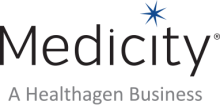Meaningful Use Stage 2 & Electronic Exchange Technology

Health Information Exchanges: Strategies and Point of View
eHealth Initiative. To be updated.
Connected Personal Health in 2015: “Getting it Right!”
White paper by the Continua Health Alliance on the emergence of connected health and wellness solutions.
Patient empowerment reflections on the challenge of fostering the adoption of a new paradigm
Literature review of the importance of patient empowerment
Sandlot - The New Model of Health Information Exchange
Sandlot Solutions. This eHealth Initiative white paper illustrates how EHR data can be leveraged to achieve not only achieve Meaningful Use, but also improve care delivery and outcomes, reduce healthcare costs, improve drug discovery protocols, and provide better data to enhance patient safety
Health Policy Brief: Improving Care Transitions
Health policy brief on how care transitions can save money and improve care.
Optum - The Rise of the Private Health Information Exchange and Changing Role of Public Exchanges
Optum Health. This eHealth Initiative white paper explores the sustainability and interoperability challenges facing public and private HIEs, as well as factors critical to their success.
An Issue Brief on eHealth Tools for Cancer Patients
Funded by the California Healthcare Foundation, this brief examines how eHealth tools can improve the management of cancer among socially disadvantaged populations. Further findings are discussed in the final report.
An Issue Brief on Health IT and Cardiac Care
This report was developed by the National Council on Heart Disease and Technology, a multi-stakeholder workgroup led by representatives from eHealth Initiative, American College of Cardiology, NextGen, American Heart Association, and the American Stroke Association. This report aims to inform the field and provide a roadmap towards achieving a robust, interoperable learning health system for heart disease.
What to Expect From Your HIE
Health information exchange (HIE) holds the potential to radically transform care by ensuring that accurate and up-to-date information is available to providers at the point of care. However, for reasons of expense, culture, or competition, some healthcare providers have been reluctant to integrate or adopt health IT systems capable of robust electronic data exchange. This paper describes the characteristics of successful enterprise HIE implementations and presents ten reasons why providers should participate in data exchange. Sponsored by RelayHealth.
